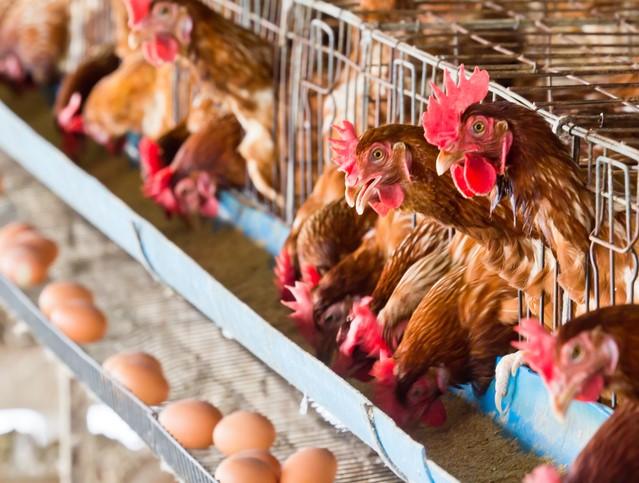A promising decade-long decline in foodborne Salmonella infections in Europe has leveled off, with a small increase reported in 2016, much of it linked to eggs and egg products, according to a joint report today from the European Centre for Disease Prevention and Control (ECDC) and the European Food Safety Authority (ESFA).
The annual report covers 2016 data on zoonotic foodborne diseases from 28 European Union member states and 9 other countries. For the year, officials detailed 4,786 foodborne illness outbreaks, a slight increase from 2015 but similar to the region's average since 2010.
Two other common pathogens—Campylobacter and Listeria—also showed some worrisome trends.
Pressing Salmonella concerns
One of the main findings is that Salmonella Enteritidis infections in humans have increased by 3% since 2014, paralleling increased prevalence in laying hens from 0.7% to 1.21% over the same span. For 2016, Salmonella Enteritidis caused one in six foodborne disease outbreaks.
Overall, Salmonella bacteria were the most common cause of food-related outbreaks—they were responsible for 22.3%, an increase of 11.5% over 2015 figures. Illnesses from Salmonella also caused the highest hospitalization and death burdens among outbreak cases. And Salmonella from eggs caused the highest number of outbreak cases: 1,882 for 2016.
Mike Catchpole, PhD, the ECDC's chief scientist, said today in an ECDC press release that the worrying increase is a reminder to stay vigilant. "Even in a state of high awareness and with national control programmes for S Enteritidis in place, there is a need for continuing risk management actions at the Member State and EU level," he said.
Underscoring the problem with Salmonella Enteritidis in layer flocks, European countries this year have been battling an ongoing multicountry outbreak linked to eggs from Poland. In a separate joint report today, the ECDC and ESFA said that, since Feb 1, eight countries have reported 196 confirmed and 72 probable cases. Before February, 16 countries had reported 340 confirmed and 374 probable cases linked to the outbreak.
Marta Hughes, PhD, the ESFA's chief scientist, said regarding the stalled drop in Salmonella infections, "Further investigations by competent authorities in the field of public health and food safety will be crucial to understand the reasons behind the increase."
Campylobacter, Listeria increase, too
Campylobacter is still the most reported foodborne pathogen in humans, with 246,307 infections detected in European countries in 2016, an increase of 6.1% from 2015. However, fatality levels were low, at .03%.
The report said Campylobacter were found at high levels in chicken meat, especially from broilers.
Also on the rise are more severe Listeria monocytogenes infections. The region reported 2,536 cases for 2016, reflecting an increase of 9.3%. There were 247 deaths from the disease, with people over age 65 especially hard-hit.
Despite the rise in cases, the ECDC and EFSA said ready-to-eat foods rarely exceeded the legal safety limits for Listeria.
See also:
Dec 12 ECDC-ESFA press release
Dec 12 ECDC-ESFA report on zoonotic foodborne outbreaks
Dec 12 ECDC-ESFA update on multicountry Salmonella outbreak


















